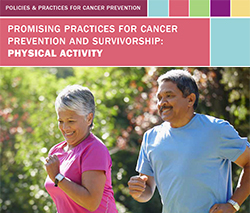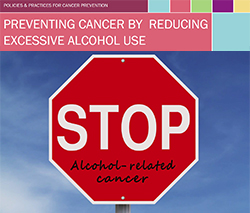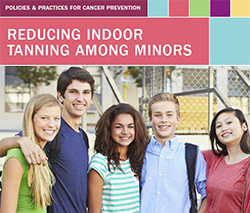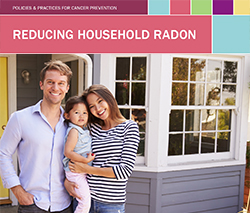Policies and Practices
Prevention is the best way to fight cancer. Policymakers, public health professionals, comprehensive cancer control programs, community groups, doctors, and individuals can help prevent cancer in many ways.

Increasing Physical Activity
Strong evidence suggests that physical activity reduces the risk of several cancers, including breast and colon cancers. Worldwide, around 10% of breast and colon cancer cases are linked to a lack of activity. Being physically active also helps prevent overweight or obesity, which may reduce a person’s risk of certain cancers related to excess body weight. This resource provides information on physical activity in children, adults, and cancer survivors, and strategies for increasing physical activity in your community.

Reducing Excessive Alcohol Use
Alcohol use increases the risk of several cancers. This publication provides information about alcohol use among young people and adults and potential strategies for reducing excessive alcohol use in your community.

Reducing Indoor Tanning Among Minors
Indoor tanning increases a person’s risk of skin cancer and is especially risky for young people. Public health efforts by state and local agencies can protect young people from the harms of indoor tanning. These efforts range from communication and educational strategies that increase knowledge and awareness to research and surveillance that can support strategies to restrict youth access to indoor tanning. Reducing Indoor Tanning Among Minors provides information about indoor tanning among minors and potential strategies for reducing indoor tanning among minors in your community.

How to Reduce Radon in Homes
Radon is a radioactive gas that occurs naturally in nearly all soil. It enters homes and other buildings through small cracks and holes in the foundation, where it becomes trapped and accumulates in the air. When people breathe in radon, it damages the lungs, which can lead to lung cancer. According the U.S. Environmental Protection Agency, radon is the leading cause of lung cancer among non-smokers and the second leading cause of lung cancer among smokers in the United States. This promising practices brief explains how to reduce radon in homes, and what states and comprehensive cancer control programs can do about radon.

Best Practices for Comprehensive Tobacco Control Programs
Tobacco use is the single most preventable cause of disease, disability, and death in the United States. Nearly half a million Americans die from tobacco use each year, and more than 16 million suffer from a disease caused by smoking. Despite these risks, about 42 million U.S. adults still smoke. This evidence-based guide, created by CDC’s Office on Smoking and Health, helps states plan and establish effective tobacco control programs to prevent and reduce tobacco use.
- Page last reviewed: March 15, 2018
- Page last updated: March 15, 2018
- Content source:


 ShareCompartir
ShareCompartir